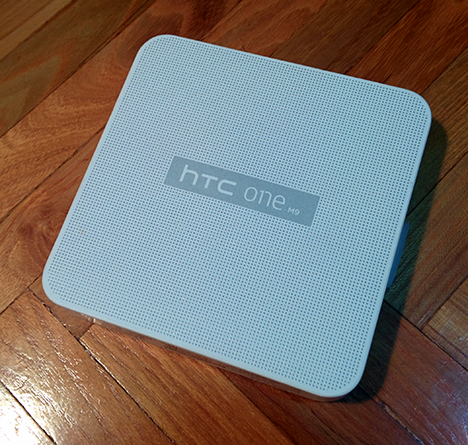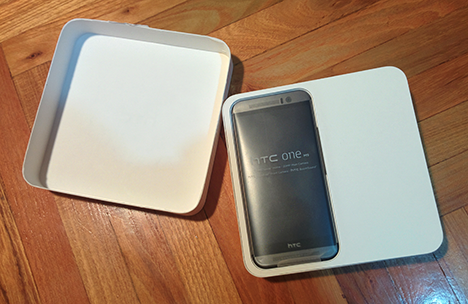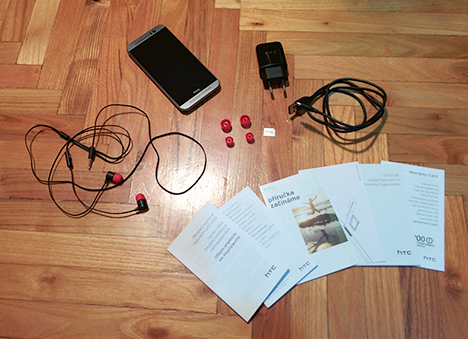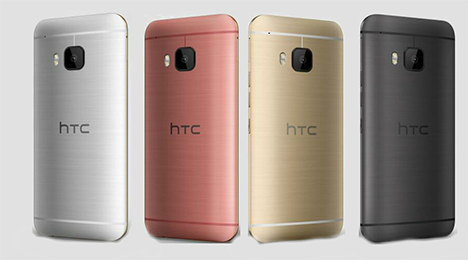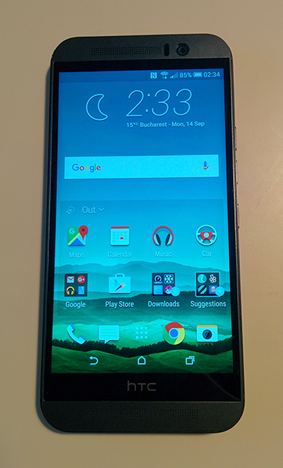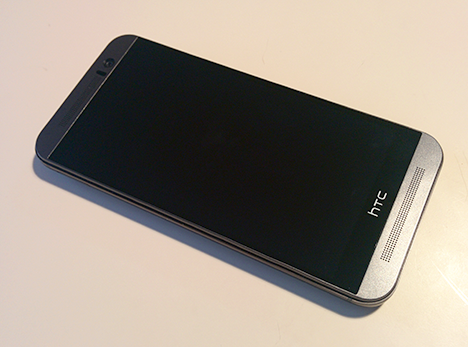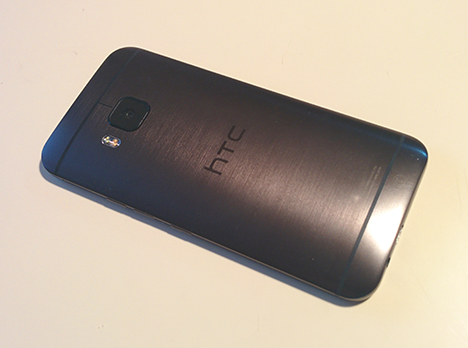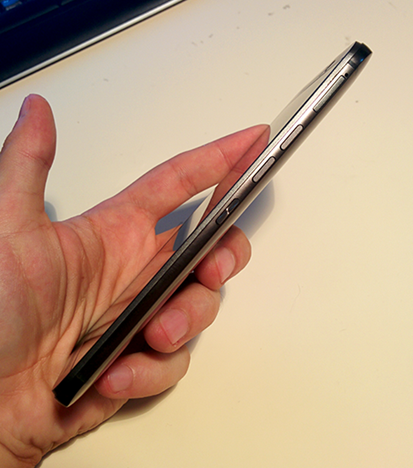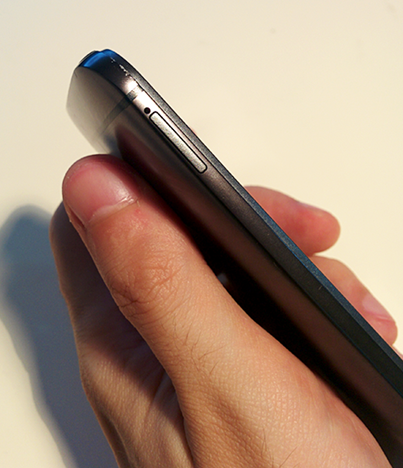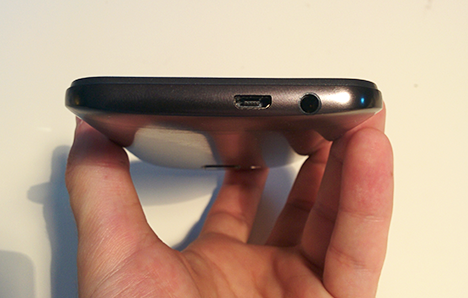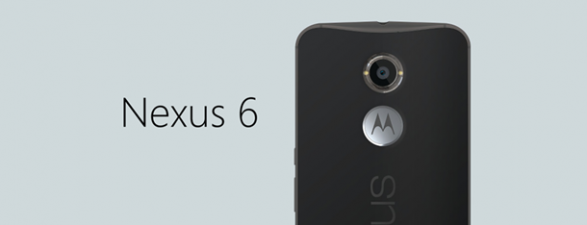
Founded in 1997, HTC focused on building portable devices, such as mobile phones and PDAs. The company quickly excelled in the mobile market with their Windows Mobile devices in Microsoft's mobile operating system's early days and was also the first mobile phone manufacturer to launch an Android based smartphone - the 2008 HTC Dream. Their Desire series has been one of the most successful mobile phone lines, with smartphones for everyone - flagships, entry-level or mid-level, featuring physical keyboards (remember the HTC Desire Z aka the G2?) or relying only on touchscreens. Recently, they started the One line of devices, a series of smartphones, each of them more powerful and delivering higher performance than the previous one. Following in a particularly successful smartphone's steps (the HTC One M8), earlier this year, specifically in March of 2015, the most recent addition to the series, the HTC One M9 saw the light of day for its first time. We were excited to get ahold of it and we're ready to report our opinions. Are you as curious as we are about how big a punch it packs? Read on and find out.
Hardware Specifications & Packaging
We were impressed from the beginning by HTC One M9's shipping package, a square bright-white cardboard box with rounded corners and covered in glossy gray polka dots. The only detail that breaks the classic line of the design is the "HTC One M9" logo in the middle of the top cover of the box. On the bottom of the box you can find the device's hardware specifications.
Break the safety seal on the side, flip open the top cover of the box and on the left side sits the proud One M9, on a protective cover that houses all the other accessories below.
Under this protective inner cover, you'll find all the additional items that come shipped with this device: the power-charger, the USB-microUSB charging and data transfer cable, the headphones (equipped with 3 sets of ear-buds of various sizes), the SIM card eject pin and all the needed paperwork, including the warranty and the Quick-Start Guide.
HTC has released 4 color flavors for its One M9 smartphone, specifically Silver/Rose Gold, Gold/Pink, Amber Gold and the classic Gunmetal Grey. The one we had in for testing purposes is the Gunmetal Grey version, which shed an imposing and masculine light onto the device.
The time has come to see what makes the HTC One M9 tick. Under the hood, the central processing unit is the latest and greatest CPU manufactured by Qualcomm, the Snapdragon 810 CPU, consisting of a Quad-core 1.5 GHz Cortex-A53 and a Quad-core 2 GHz Cortex-A57, running on a Qualcomm MSM8994 chipset. This CPU has received some bad publicity lately, due to reports of overheating issues earlier this year, but we've noticed none of that. All the same, it is a powerful piece of processing power, as we'll see later on.
On the graphics side, the HTC One M9 features an Adreno 430 GPU, also the latest news in terms of GPUs. As a sneak preview, we can tell you this little fella is somewhat of a wonder in itself, but we'll show you how well it performs in this setup in the benchmarks section.
The HTC One M9 runs on 3GB of RAM memory, which seems like the standard amount of RAM memory for the flagship smartphones these days. HTC decided to release a single version of the device as far as storage space is concerned, specifically 32GB of internal memory, but on the other hand, the device features a microSD memory card slot, capable of handling memory cards of up to 128GB of storage space, so you won't run out of space any time soon.
Moving on to the display, the HTC One M9 is equipped with a 5 inch Super LCD3 touchscreen scaled at a full HD resolution of 1080x1920 pixels. The 441ppi pixel density is decent enough, but compared to some other flagship devices released during the same period, it's not that impressive. Being protected by the Gorilla Glass 4 technology, the display offers a good image quality, but overly vivid colors and crisp display capabilities have never been HTC's strong points.
The battery that sustains the One M9 is a Non-removable Li-Po 2840 mAh battery that managed to keep our test device running for more than 2 days of minimum usage. Under regular use, we got a full day of juice out of it, ending the evening with about a quarter of the energy left in it. The fact that HTC decided to go for the Li-Po technology is quite welcomed.
Moving on to the cameras, HTC chose a primary rear-facing camera of 20 MP, shooting at a resolution of 5376 x 3752 pixels and equipped with autofocus, HDR mode and a dual-LED flash. Sadly, there's no image stabilization technology available. However, when given enough light, the camera produces pictures of great quality and vivid colors. For clip hunters, it can record videos at 2160p@30fps or 1080p@60fps. One thing we appreciated about it is the fact that you can download and install various settings for the camera, such as a "bokeh" mode that emphasizes the central subject while fading out the details behind it. Worth mentioning is the fact that the back camera is protected by a sapphire glass cover, a material known for its strength and resilience. The front camera is also a decent 4 MP one, able to record videos of 1080p@30fps and benefiting from various technologies such as a smile detector or a specially designed selfie mode.
In terms of connectivity, the One M9 has been given the classic dual-band Wi-Fi adapter capable of handling 802.11a/b/g/n/ac protocols, offering compatibility for both 2.4GHz and 5GHz wireless networks and supporting the DLNA sharing standard. Also present are the Bluetooth 4.1 chip featuring A2DP technology, a GPS module, an infrared port, a NFC module and a microUSB 2.0 port capable of turning the device into a USB host and offering support for MHL TV-out technology. There's also a stereo FM radio available.
The physical dimensions of this device are 144.6mm (or 5.69 inch) in Length, 69.7mm (or 2.74 inch) in Width and 9.6mm (or 0.38 inch) in Height. It weighs 157 grams, which is quite heavy when compared to other devices, but this is a side effect of the strong and efficiently protective aluminium back cover.
If you're looking for more detailed specifications for this device, you can find them on the manufacturer's website: HTC One M9 Technical Specifications.
While not aiming for impressive features and eye-candy design, the HTC One M9 manages to give the impression of a strongly built and robust device. The components powering it are chosen only from the high-end shelf and it's clear that the M9 is intended as a top-of-the-line smartphone.
Design & Build Quality
As we've mentioned before, the HTC One M9 is a robust and imposing device, built "like a tank" and seemingly capable of sustaining rough handling, more or less. There's no hardware button on the front of the device, the HTC One M9 relies only on the classic Android software keys. On the bottom of the front side, below the HTC logo, there's the microphone hidden behind the grilled cover, while on top, you'll find the earpiece, the proximity and ambient light sensors and the front-facing 4 MP camera.
Its unibody back cover is made of curved metal and features the HTC logo in the middle. Centered on top of the backside you'll find the sapphire-protected rear camera, with the dual-LED flash sitting to the left.
The volume buttons and the power and lock button are all situated on the right side of the device, below the microSD memory card port.
On the left side of the device you'll only find the SIM card port.
The entire top side of the device is owned by the dark-red glass covering the infrared port, while on the bottom side sits the microUSB charging and data transfer port and the 3.5mm audio jack.
The HTC One M9 is impressively robust in its build, the brushed metal back cover feels good to the touch, leading you to the thought that it is a smartphone intended for the masculine demographics, but not restricted to them. It is easy to handle, sits comfortably in your hand and all the buttons are well positioned for adequate reach.
The Smartphone Experience On The HTC One M9
While making and receiving calls using the HTC One M9, the sound quality has been flawless on our part. The sound on the other end might have been a bit too loud, which leads to the conclusion that the microphone of this device is a pretty sensitive one - and that is not bad at all. The sound was also of great quality when using the included headphones. Worth mentioning here is the fact that HTC offers 3 different sizes of ear-buds, a nice touch of comfort.
The HTC One M9 comes with Android 5.0 Lollipop preinstalled and can be upgraded to Android 5.1, as of now. It is branded with HTC's own user interface, the HTC Sense. The user interface looks and feels very professional and clean, with convenient shortcuts and special features added on top of the default Android experience. Unlike Samsung's coloured and eye-candy TouchWiz, HTC aims for a clean and minimalistic look for their devices. The design is built using solid colors and simple, straight lines.
When we took the HTC One M9 out for a spin, we tried using it as we use our own mobile phones (some internet browsing, a few calls, some text messages and shooting photos) and easily managed to get a full day out of it, stretching even towards the end of the second day. Clearly, the battery consumption of the device is heavily optimized, making it able to provide enough power to last a long way before it forces you to start looking for the nearest power outlet.
Should you decide to go for the HTC One M9, you won't be disappointed by the phone experience it offers. On the contrary, the in-call sound is flawless and the battery lasts enough for a whole two days, should you need it to.
The Camera Experience On The HTC One M9
As stated earlier in this review, the HTC One M9 is equipped with a 20 MP main rear camera, capable of shooting photos at a maximum resolution of 5376 x 3752 pixels. It features an HDR mode, autofocus capabilities and benefits from a dual-LED flash. The video clips it is able to record can be shot in 2160p at a framerate of 30 fps. Unfortunately, there is no image stabilization available on this smartphone.
The HTC camera app is quite versatile and offers a lot of minor but interesting features. For example, you can "install" several camera-setting sets, such as "bokeh" (which puts the main subject in perfect focus while fading out the surroundings, creating a nicely looking eerie effect on the photo) or "split capture" (which produces a collage of two photos, one taken with the rear camera and the other with the front camera). It can even shoot pictures in RAW mode (DNG file format). Amateur photographers will love the camera capabilities of the HTC One M9, especially because it offers easy access to the detailed settings, such as aperture value, exposure time, white balance settings or ISO sensitivity.
In the photo gallery below, you'll find some pictures we took with the HTC One M9.
There's also a video clip we shot, recording the traffic from a boulevard in Bucharest, Romania.
While the picture quality of the photo camera installed in the HTC One M9 is not the greatest we've seen in a smartphone, the camera app used to operate it more than makes up for this. It offers a lot of features such as RAW photo shooting, several installable camera-setting sets and easy access to all the advanced settings a professional photo camera should offer.




